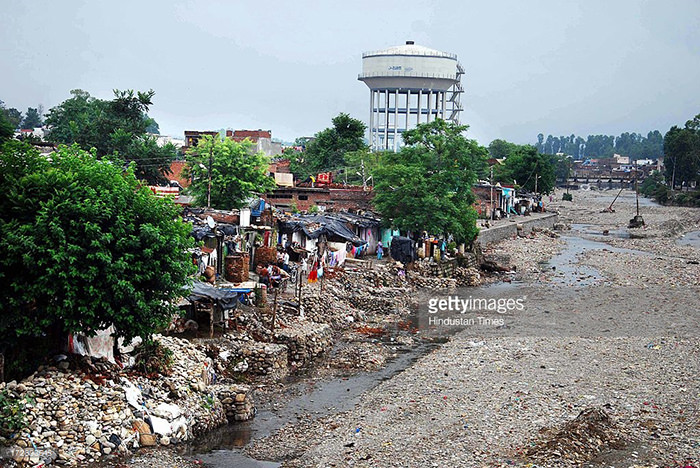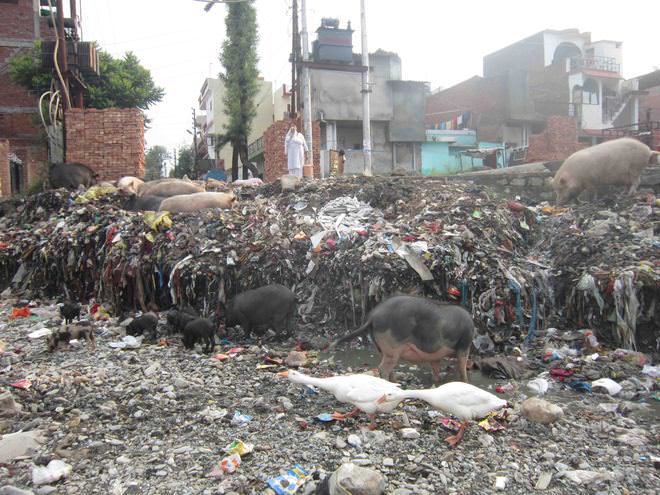The city of Dehradun is nestled under the Foothills of The Himalayas in a very scenic and serene way. Dehradun has been blessed with abundance of comeliness which attracts seekers from around the world to Visit The Best Places in Dehradun. Being located under the Himalayan Foothills the city of Dehradun was been consecrated with scenic topography, freshwater rivers, forest green hills and salubrious weather. Ever since its making Dehradun has experienced a number of good and bad times, there have been landslides, floods and forest fires in all these years, but the frequency of all of this mishap is taking Doon towards its Doom. Looking at the Plight of Rivers in Dehradun its becoming more of a sight of pity rather than serenity. To highlight the concern of protecting and preserving these rivers you should know about the Condition of Rivers in Dehradun, read on to find it.
1. The Suswa River
The Suswa River originates in the midst of the clayey depression near the source of the Asan but towards the East of the Asarori-Dehradun Road. Flowiing in the South-east direction the Suswa river drains the Eastern part of Doon. It also receives the minor streams rising in the North and the South. It further merges into the Bindal and the Rispana Rao river and then receiving waters of the Song river. The Suswa River also merges into the Ganga in the Eastern part of Dehradun.
Plight of Suswa River in Dehradun
According to statics the Suswa River is now experiencing a 10 to 15% increase in all the hazardous chemical compounds as compared to last year. The Dhoodhli Valley which was once famous for its aromatic rice field that were cultivated because of the Suswa River, exist no more. This area is now more of a breeding ground of plagues, pollutants and heaps of discarded matter. As the Suswa River also pollutes the water of Ganga being one of its tributary. The residents of areas such as Mothrowala and Dhobhi Ghat have also been adding a number of pollutants like detergent water into the river. A number of sources have confirmed that this water is causing water borne ailments and in some cases its also causing cancer.
According to Society of Pollution and Environmental Conservation Scientists (SPECS) there have been toxic compounds like high amounts of chromium, zinc, iron, magnese, oil and grease which are toxic to the soil. The water of the Suswa River also goes through the Rajaji National park, where a number of animals have been drinking this water and some of them are suffering from intestinal problem. The pollutants from Rispana and Bindal have been contaminating the Suswa river which is further contaminating the Gnaga, thus it needs to be checked thoroughly.
2. Rispana River Dehradun
The Rispana River has been draining in the Doon Valley from way back. The Rispana River originates from the Old Rajpur Village, the land then drops into a trench through which the Rispana River flows, fed by a number of hill springs and torrents. It flows around Rajpur and then passing through Dehradun towards the South, eventually it meets the Song, Suswa and the Ganga river and then flows towards Rishikesh and Haridwar.
Plight of Rispana River in Dehradun
The Rispana River has been in news since a while now because of its extremely degrading plight. The Rispana is in an unimaginable condition. The vast number of encroachments, the piles of trash and the massive amounts of sewage is been disposed into the Rispana River. Many travelling companies also have their jeeps and trucks parked on the river beds beneath the Rispana Bridge are making them weaker with every passing day.The increasing slums in Dehradun are also contributing towards the eradication of the river. The slums are unauthorised colonies which are increasing and producing effluents and other pollutants in the river and the government is legitimising some of them instead of taking action against it. Dairy waste is also dumped in the river by the dairy owners which makes the river uglier.
There have been traces of chromium, mangnese, led, oil, grease and other toxins which are making the Rispana River hazardous with every passing day. The oil and grease standard of a river is 0 mg/litre while it is 13-27 mg/litre in the Rispana. The chlorides standard of the river water is 250 mg/litre but it is 467-814 mg/litre in Rispana. The phosphate standard of the river water is 0 mg/litre but it is 1.6-2.9 mg/litre in Rispana. The levels of toxins in the Rispana have exceeded in every sector according to all the samples checked by SPECS. This kind of boom of this perennial river of Dehradun is going to eradicate the major source of flooding out water from the city of Dehradun, as the Rispana and the Bindal River are the only seasonal rivers that keep the town safe from being flooded, thus the safety and cleanliness of the Rispana river is an emergency and urgency without any ounce of doubt.
3. Bindal River
Plight of The Bindal River
The Bindal River joins the Suswa River along with the Rispana in the Eastern Dehradun. The Suswa river further flows into The Ganga as it is one of the tributary of Ganga. The Bindal is one of the very important seasonal river of Dehradun as it serves as a valve to disperse rainwater of Dehradun during the times of heavy rainfall. Till the late 70’s, The Bindal River was home to fresh water & small fishes through out the year & small children enjoyed playing in its waters. But now the increasing number of slums and encroachments on the Bindal river has turned it into a dumping pit. The amounts of toxic material that is now been found on the river beds is increasing the toxicity of the Bindal River.
The excess amount of raw sewage that is been disposed into the Bindal is making its condition worse every single day. The metal toxicity of Bindal increases each year in ways beyond imagination. The river bed of ‘Bindal’ is lined with domestic waste, effluents, plastics, animal carcasses and human excreta. Cases of trucks being frequently parked in the Rispana and Bindal beds are making the river beds weaker and weaker. The urgent need of looking into the matter and resolving the issue is required, as the Bindal like the Rispana is one of the tributaries of the Ganga River and thus, in needs to be taken care of to save the ecosystem of Dehradun and furthure to keep the Ganga unpolluted.
4. Song River
The Song River rises in the Tehri Garhwal and after going parallel to the Dehradun region it unites with the Bindal in some kilometres in the north-west direction. In this region further it breaks, in a wide gorge, through the last line of the outer scarp of the Himalayas and recieves the Baldi River near the village of Dwara in the Raipur region. The Song river further flows in the south-easterly direction until it meets the Suswa River in Doiwala.
Plight of Song River in Dehradun
Although the Song River is not as polluted and its quality is also not degraded like the Rispana and Bindal Rivers, but the gradual increase of garbage and the misuse of the river has been increasing eventually lately in the residential areas of Doiwala where it is been polluted due to the dumping of domestic waste. As there are a number of villages that are resided nearby the Song River in the Doiwala area, there can be seen practises like washing clothes on a very frequent basis. The release of detergent water in the river has now become a common sight and is polluting the water of the river gradually and slowly. Other areas like the Kalluwala region the river is polluted due to stone mining activities in this region. The Lacchiwala water park also gets its water through a tributary of the Song River in Doiwala, The Song river flows in huge distances and therefore it needs to taken care if rigorously.




